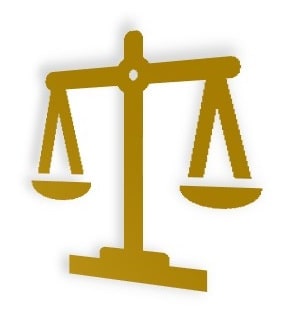- Home
- Market Failure
- Parallel Conduct

Parallel Conduct in Economics, Explained (with Examples)
Parallel conduct is a simple concept in economics that refers to the anti-competitive behavior of individual firms within an industry when they cooperate with each other in some way - usually to control prices and/or production and thereby make unfair economic profits at the expense of consumers.
This sort of conduct is clearly much easier to arrange in an industry that has a smaller number of big producers that dominate a market i.e., an oligopoly or an industry in monopolistic competition. The smaller number of firms allows greater opportunity for firms to share information and collude in privacy, and thereby escape detection by the authorities.
While there is no doubt that such offences occur, and possibly on a much broader scale than any of us imagine, it would be an exaggeration to claim that parallel conduct is endemic within the corporate world. Most executives and directors are mindful of antitrust law, and do not want to face the possibility of antitrust lawsuit litigation costs.
In addition to the financial penalties that could be imposed on a firm, there are possible criminal charges that could be brought against the individuals involved, with lengthy prison terms handed down if found guilty in a court of law.
Parallel Conduct Example
The best parallel conduct example is given by an in-depth case study.
For this I would recommend reading about an action brought by the Australian Competition and Consumer Commission (ACCC) against Colgate-Palmolive involving what they claimed to be collusive conduct in the Australian detergent market. The case involved other suppliers and retailers i.e. Unilever, Cussons, and Woolworths, and provides valuable insights into the complexity of such cases.
As a heads up, whilst some allegations by the ACCC were settled out of court with substantial fines, other charges went to court but were ultimately dismissed by the trial court judge for lack of proof. The ACCC then appealed the trial judge ruling to the full court, but the full court dismissed the appeal.
For details on the court-case, its rulings, and the appeals that followed, see the PDF link below.
Parallel Conduct & Competition Law
Parallel Conduct is forbidden in the US under Section 1 of the Sherman Act.
Difficulties arise with this sort of business conduct because it leads to suboptimal outcomes in the market with regard to pricing and output levels. It is illegal in most developed countries for firms to have an explicit agreement to cooperate (or 'collude') in this way.

Naturally, the legal implications may be quite clear in theory, but in practice it is extremely difficult to prove that any law has been broken merely because two or more firms in an industry appear to have made similar corporate decisions.
That appearance may be purely superficial, and there may well be real economic forces at work that lead to similar decisions being made by different firms. In fact, the natural codependency of firms that operate in oligopoly markets actually requires that their own individual decisions take into account how competitors will react to their actions.
If these firms each arrive independently at a decision to act in a certain way, even when assessing information about competitor actions, then this is perfectly legal and proper.
When parallel behavior is legal, and when it is not...
It is only a violation of the law if firms deliberately share information and conspire to act in ways in which they would not act if they were behaving independently of each other's actions.
I think that you can probably imagine how difficult it is to prove this sort of collusion in a court of law, even though such parallel behavior no doubt happens in the real world rather frequently.
Twombly and Iqbal
Twombly and Iqbal were two separate legal cases that led to some controversial judgments from the Supreme Court of the United States. The two cases are often referred to as 'Twikbal', and they relate to civil law proceedings rather than criminal law.

In essence, the judgments made it harder for plaintiffs to take defendants to court by requiring a higher standard of plausible claims to be demonstrated.
It is no longer sufficient to simply provide information showing that two or more firms have acted in a similar manner, specific facts and evidence of parallel behavior is now required. Failure to satisfy this subjective standard of plausibility will result in cases being dismissed without charge.
Now, I'm no legal expert but I'd imagine that these judgments by the Supreme Court were not made off the back of a successful track record of civil proceedings proving violations against alleged transgressors. I think it more likely that the extreme difficulty of proving parallel conduct offences is what led to these judgments.
Difficulties
and Controversies
As alluded to above, complications related to parallel conduct (in the context of competition law) often revolve around the question of whether any similar conduct of competing firms are the result of collusion or whether they are the outcome of independent decision-making.
If firms engage in parallel conduct that seems too coordinated, regulators may investigate and allege collusion. Collusion involves an explicit or implicit agreement between competitors to coordinate their actions, such as setting prices, which is generally illegal under antitrust laws.
Common types of business practices that raise suspicion are:
- Hub-and-Spoke Conspiracies - This type of collusion involves a central firm (hub) communicating separately with other firms (spokes) to achieve a common anti-competitive goal.
- Conscious Parallelism vs Tacit Collusion - Conscious parallelism refers to firms independently making similar decisions without explicit coordination, which is generally legal. However, distinguishing between conscious parallelism and tacit collusion (unspoken cooperation) can be challenging.
- Economic Rationalization - Firms acting illegally might argue that their actions are based on rational economic behavior rather than collusion. They may claim that similar market conditions, technological advancements, or customer demands have led to the parallel behavior.
Sources:
Related Pages:
About the Author
Steve Bain is an economics writer and analyst with a BSc in Economics and experience in regional economic development for UK local government agencies. He explains economic theory and policy through clear, accessible writing informed by both academic training and real-world work.
Read Steve’s full bio
Recent Articles
-
U.S. Industrial Policy & The Unfortunate Sacrifice that Must be Made
Dec 12, 25 03:03 AM
U.S. Industrial Policy now demands a costly tradeoff, forcing America to rebuild its industry while sacrificing bond values, pensions, and the cost of living. -
The Global Currency Reset and the End of Monetary Illusion
Dec 07, 25 03:48 AM
The global currency reset is coming. Learn why debt, inflation, and history’s warnings point to a looming transformation of the world’s financial system. -
Energy Economics and the Slow Unraveling of the Modern West
Dec 06, 25 05:18 AM
Energy economics is reshaping global power as the West faces decline. Explore how energy, geopolitics, and resource realities drive the unfolding crisis. -
Our Awful Managed Economy; is Capitalism Dead in the U.S.?
Dec 05, 25 07:07 AM
An Austrian analysis of America’s managed economy, EB Tucker’s warning, and how decades of intervention have left fragile bubbles poised for a severe reckoning. -
The Looming Global Debt Crisis – According to Matthew Piepenburg
Dec 04, 25 02:38 PM
A deep analysis of the unfolding global debt crisis, rising systemic risks, and the coming reckoning for bonds, stocks, real estate, and the dollar.